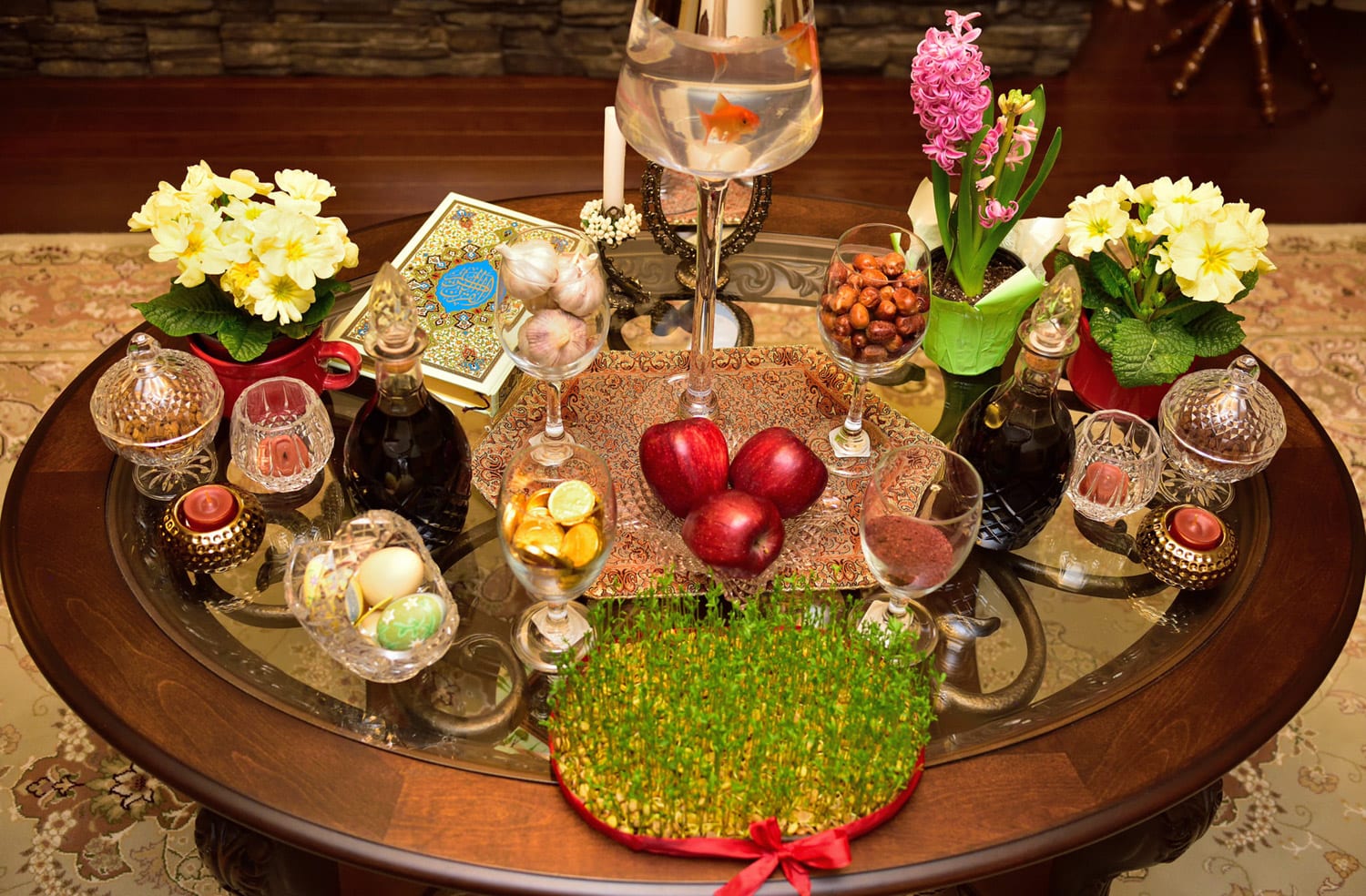Celebrating Nowruz: The Vibrant Festivity of New Beginnings

Nowruz is a joyous celebration of life and family. All Iranians observe it, regardless of their ethnic or religious backgrounds. It is perhaps the single most unifying marker of Iranian identity.
Sources from the early centuries of Islam provide numerous accounts of how Iranian Muslims continued to celebrate their “national holiday” alongside Zoroastrians, despite frequent opposition from the religious authorities.
Entreaties by the authorities that Nowruz should be “considered a simple, ordinary day like any other day and ignored” went manifestly unheeded by the population at large.
Nowruz: An Ancient Ritual
In contemporary Iran as well, Islamic rule has had to accommodate the Iranians’ love of Nowruz, even certain aspects to which it objects. The Tuesday night before Nowruz, called Chahar-shanbe suri, is a time when Iranians set bonfires and jump over them, speaking to the fire: “May you take from me my yellow (that is, ‘my fear’); may I take from you your red (‘your courage and vitality’)”—clearly an example of a very ancient ritual that has nothing whatsoever to do with Islam.

Chaharshanbe Suri (The Nationwide Fire-jumping)
The nationwide fire-jumping lasts for hours and is often accompanied by firecrackers and other chaotic expressions of joy and anarchy. With eighty million people simultaneously involved, it is impossible for Iran’s security forces to maintain any semblance of public order during this wild and crazy evening.
Sofre-ye Haftsin
Nowruz is seen as a time of renewal, and Iranians typically spend weeks cleaning their homes in preparation for it. They lay out a special spread called haft sin, “seven [things beginning with the letter] S,” which also includes a holy book (the Qur’an, the Avesta, or even the Odes of Hafez) and usually a bowl of water with live goldfish.
There is also a plate of sprouts, symbolizing new vegetable life, which are kept till the thirteenth day of Nowruz, called Sizdah be-dar (Thirteenth Outside), when they are taken out and cast into a body of flowing water such as a river or stream.
On the day of Nowruz itself families sit together and count down excitedly to the moment of the equinox—even if it occurs in the middle of the night—and then rush into each others’ arms with hugs and kisses to welcome in the new year.
This event is followed by a two-week national holiday during which people visit each other’s homes in turn, sharing tea, sweets, and conversation. It is a joyful time of year, but no business gets done.
Nowruz is perhaps the most visible sign of Iranian influence on neighboring peoples, being celebrated as a national holiday throughout Central Asia, the Caucasus, and as far west as the Balkans.
For much of history the Iranian world encompassed lands from Mesopotamia to the marches of India and China, even if the borders never remained fixed for very long. But if Iran is above all an affinity—an affective notion, rather than a political one—then borders are perhaps not what matters most.
Related Articles




